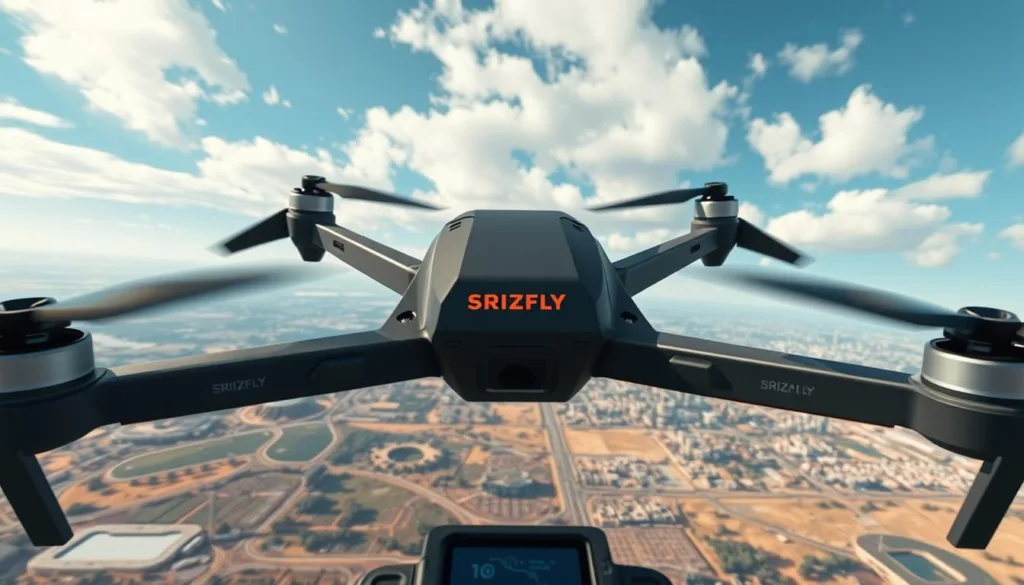Mastering the art of drone flight requires practice, patience, and the right training tools. At SRIZFLY, we understand the importance of simulator technology in developing piloting skills before flying actual drones. Our in-house team of software engineers and digital designers have crafted innovative solutions to enhance your flying experience.
The DJI Drone Flight Simulator Free Version is an essential training tool that provides a risk-free environment for both beginners and experienced pilots to practice complex maneuvers. By utilizing this simulator, you can accelerate your skill development, reduce costs, and enhance your overall flying confidence.
Key Takeaways
- Understand the importance of drone flight simulators in developing piloting skills.
- Learn how the DJI Drone Flight Simulator Free Version serves as an essential training tool.
- Discover the benefits of using flight simulators, including cost savings and accelerated skill development.
- Explore how simulator training translates to real-world flying confidence and competence.
- Find out what to expect from this comprehensive guide, from installation to advanced flight techniques.
Understanding the DJI Drone Flight Simulator Free Version
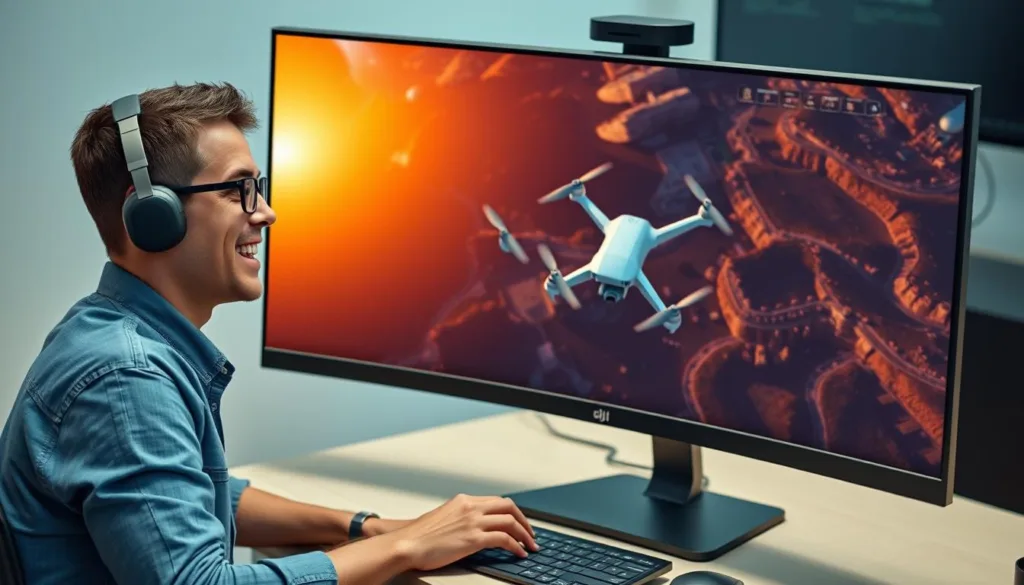
The DJI Drone Flight Simulator offers a risk-free environment to practice and hone your drone flying skills. This software is designed to mimic the real-world experience of flying a DJI drone, allowing users to become familiar with the handling and characteristics of their drone in a controlled setting.
What Is the DJI Flight Simulator?
The DJI Flight Simulator is a software program developed by DJI that simulates the experience of flying a DJI drone. It provides a realistic and immersive environment for users to practice flying, test drone capabilities, and learn how to handle different scenarios without the risk of damaging their drone.
Benefits of Using a Drone Simulator Before Real Flights
Using a drone simulator like the DJI Flight Simulator before actual flights can significantly improve a user’s skills and confidence. It allows users to practice in a variety of environments and conditions, reducing the risk of accidents and improving overall flight safety.
Free Version vs. Enterprise Version: Key Differences
The DJI Flight Simulator is available in two versions: Free and Enterprise. The Free Version offers a limited experience, with restricted access to features and environments. In contrast, the Enterprise Version provides full functionality, including additional drone models, environments, and training scenarios. The Enterprise Version also offers advanced features like multi-user management and performance analytics.
When deciding between the Free Version and the Enterprise Version, consider your training needs and goals. If you’re a professional or an organization looking for comprehensive training, the Enterprise Version is likely the better choice. For casual users or those looking to try out the simulator, the Free Version is a good starting point.
System Requirements and Compatible Hardware
To get the most out of the DJI Drone Flight Simulator, it’s essential to understand the system requirements and compatible hardware. The simulator is designed to provide a realistic and immersive experience, but its performance depends on your computer’s specifications and compatible hardware.
Computer Specifications Needed
The DJI Drone Flight Simulator requires a computer with specific specifications to run smoothly. We recommend checking the minimum and recommended setup requirements to ensure an optimal experience.
Minimum Setup Requirements
The minimum setup requirements include a quad-core processor, 8GB of RAM, and a dedicated graphics card. This will allow you to run the simulator, but you may experience some limitations in terms of graphics quality and performance.
Recommended Setup for Optimal Experience
For an optimal experience, we recommend a computer with a hexa-core processor, 16GB of RAM, and a high-end dedicated graphics card. This will provide a smoother and more realistic simulation experience.
| Component | Minimum Requirements | Recommended Requirements |
|---|---|---|
| Processor | Quad-core | Hexa-core |
| RAM | 8GB | 16GB |
| Graphics Card | Dedicated graphics card | High-end dedicated graphics card |
Supported DJI Remote Controllers
The DJI Drone Flight Simulator supports various DJI remote controllers, allowing you to connect your existing controller and enjoy a more immersive experience. The supported remote controllers include the Mavic Pro and Phantom 4 series controllers.
Compatible DJI Drone Models in the Simulator
The DJI Drone Flight Simulator offers a range of compatible DJI drone models, including consumer models like the Mavic Air and Spark, as well as professional models like the Inspire 2 and M210 RTK. The simulator accurately replicates the flight characteristics and camera capabilities of each drone model, providing a realistic experience.
- Mavic2 Enterprise
- Mavic2 Zoom
- Mavic Air
- Mavic Pro
- Spark
- Phantom4 Pro
- Inspire1 Pro
- Inspire2
- M210 RTK
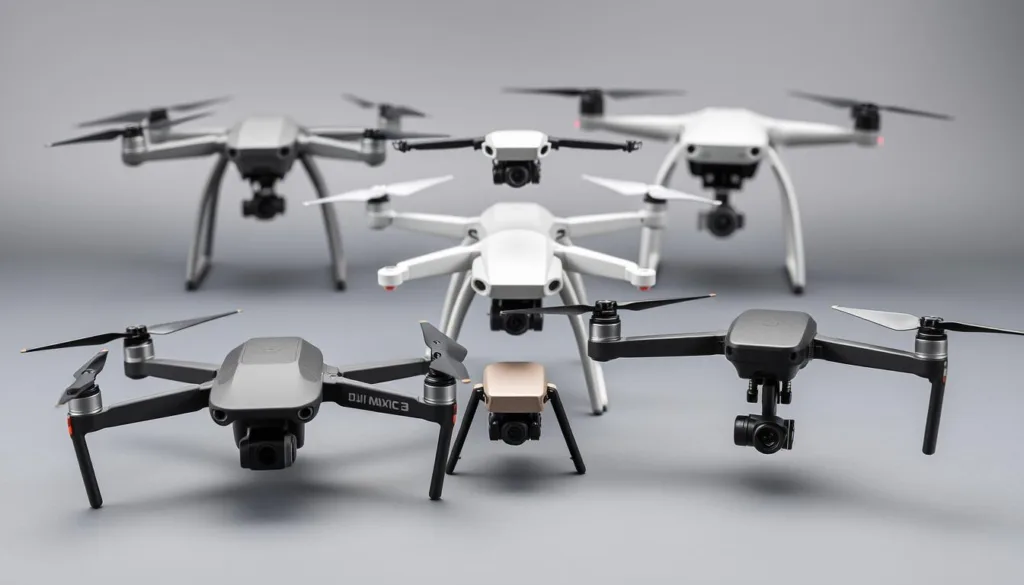
How to Download and Install the DJI Drone Flight Simulator Free Version
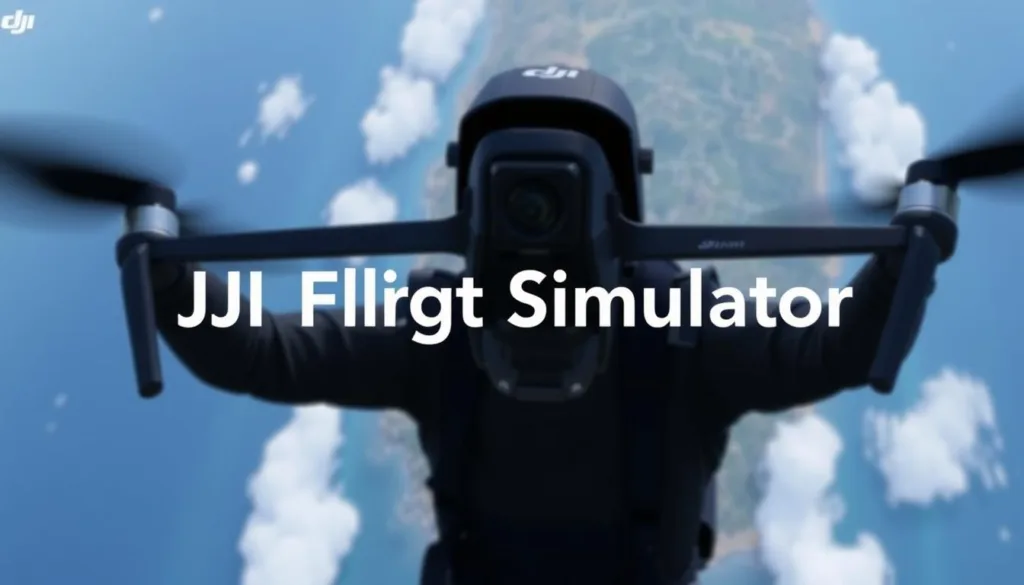
Experience the thrill of drone flying with the DJI Drone Flight Simulator; let’s walk through the download and installation process. To begin, you need to access the DJI Download Center.
Accessing the DJI Download Center
The DJI Download Center is your gateway to obtaining the DJI Drone Flight Simulator. To access it, navigate to the DJI official website and look for the “Download Center” or “Support” section. Here, you can find various DJI products and software, including the simulator.
Step-by-Step Installation Process
Once you’ve downloaded the simulator from the DJI Download Center, follow these steps to install it:
- Run the installer and follow the on-screen instructions.
- Choose the installation location and agree to the terms and conditions.
- Wait for the installation to complete.
This process is straightforward and should only take a few minutes.
Creating and Using Your DJI Account for Activation
To activate the DJI Drone Flight Simulator, you need to create a DJI account or log in if you already have one. Here’s how to create a new account:
- Go to the DJI account registration page.
- Enter your email address and other required information.
- Verify your email address through the link sent by DJI.
With your DJI account, you can log in to the simulator and start using the Free Version immediately. For the Enterprise Version, you’ll need to enter the activation code provided upon purchase.
By following these steps, you can easily download, install, and start using the DJI Drone Flight Simulator. Improve your drone flying skills with the most realistic simulator available.
Getting Started with Your First Simulated Flight
Embarking on your first simulated flight with the DJI Drone Flight Simulator is an exciting step towards mastering drone operations. To get started, you need to understand the basic requirements and setup process.
Connecting Your Remote Controller to the Computer
To connect your remote controller to the computer, you’ll need a compatible DJI Remote Controller and a Micro-B to USB-A cable. This connection enables the simulator to recognize and respond to your control inputs. Ensure that your computer meets the system requirements, including a Windows 10 operating system.
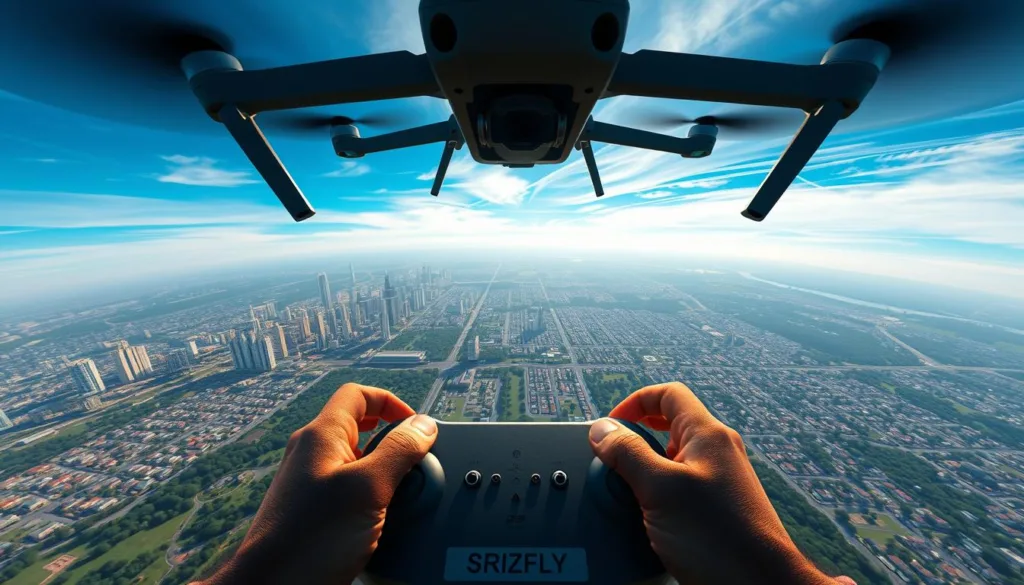
Navigating the Simulator Interface
The DJI Drone Flight Simulator interface is designed to be intuitive and user-friendly. Familiarize yourself with the various menus and settings to customize your simulation experience. You can select different environments, weather conditions, and drone models to simulate real-world scenarios.
Basic Flight Controls and Maneuvers
Mastering basic flight controls is essential for a safe and enjoyable drone piloting experience. The simulator allows you to practice fundamental skills such as takeoff, landing, hovering, and basic movements.
Takeoff and Landing Procedures
Takeoff and landing are critical phases of flight. In the simulator, you can practice smooth takeoffs and landings, adjusting to different terrain and environmental conditions.
Mastering Hovering and Basic Movements
Hovering is a fundamental skill that requires precision and control. The simulator helps you develop stable hovering techniques, which are essential before attempting more complex maneuvers. You can practice controlling your drone’s altitude, yaw, and lateral movements.
| Control Input | Action | Tips |
|---|---|---|
| Throttle | Altitude Control | Gradual adjustments for smooth ascent and descent |
| Yaw | Directional Control | Use gentle turns to maintain orientation |
| Lateral Sticks | Lateral Movement | Practice moving the drone sideways while maintaining altitude |
By practicing these basic flight controls and maneuvers in the simulator, you’ll become more confident and proficient in your drone piloting skills.
Conclusion: Maximizing Your DJI Simulator Experience
The DJI Drone Flight Simulator Free Version offers a risk-free environment to hone your drone flying skills. By utilizing this simulator, you can significantly accelerate your learning curve and reduce the risk associated with real-world flights.
Structured practice sessions are key to maximizing the benefits of the simulator. Start with basic maneuvers and progressively move to more advanced techniques. This structured approach will help you build a strong foundation and enhance your overall flying skills.
Transferring skills learned in the simulator to real-world flying requires understanding the psychological aspects of confidence building and risk management. Regular simulator practice can help you stay current during off-seasons or when weather conditions prevent actual flying.
For those seeking advanced simulation options, SRIZFLY’s SESP-U1 Drone Simulator offers complementary training capabilities. Our simulator is backed by a team of highly dedicated software engineers and digital designers, ensuring high-quality simulation experiences. We have passed ISO quality, environmental, and health certifications, as well as CMMI Level 3 certification, underscoring our commitment to excellence.
To continue improving your skills, we recommend establishing a regular simulator practice routine. Additionally, leverage resources such as DJI’s official support channels, community forums, and SRIZFLY’s educational materials. By combining simulator training with real-world practice, you can become a proficient drone pilot.
We invite you to share your simulator experiences and connect with the broader drone community for ongoing support and skill development. While simulators provide excellent training, they should be viewed as a complement to, not a replacement for, supervised real-world practice when first learning to fly.
FAQ
What are the system requirements for running the simulator software?
To run the simulator, your computer should meet specific specifications, including a compatible operating system, sufficient RAM, and a dedicated graphics card. You can find the detailed requirements on the download center page.
Can I use the simulator with any DJI drone model?
The simulator supports a range of DJI drone models. You can check the list of compatible models on the product page to see if your drone is supported.
How do I connect my remote controller to the simulator?
To connect your remote controller, simply plug it into your computer via USB, and the simulator will recognize the device. You may need to follow some on-screen instructions to complete the pairing process.
Is the free version of the simulator as functional as the enterprise version?
While the free version offers a robust simulation experience, it has some limitations compared to the enterprise version. The key differences are outlined in the comparison table on our website.
Can I download and install the simulator on multiple computers?
You can download and install the simulator on multiple computers, but you’ll need to activate it using your DJI account on each device. Please refer to our terms of service for more information on usage rights.
How can I get support if I encounter issues with the simulator?
If you experience any issues or have questions, you can visit our support page for resources, including user manuals, troubleshooting guides, and contact information for our support team.

